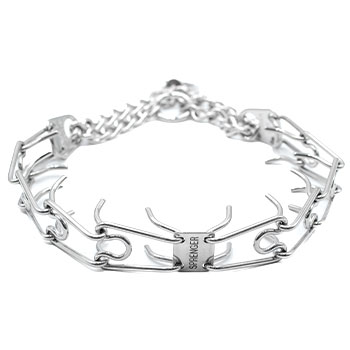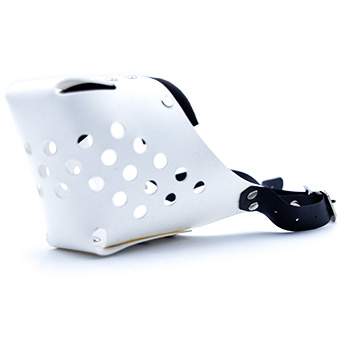April 12, 2011
I have a 1-year female German Shepherd who appears calm around my girlfriend and I. At any dog, she raises her hair and growls. Some even cause her to tear into a frenzy. What can we do?
Full Question:
I have just perused your web site for the article on dog aggression and have a few questions that I wonder if you could answer. Some of the previously answered questions were close to mine, but they just did not seem to fit the situation exactly. I have a one year old female Germ. Shepherd. She appears perfectly calm around my girlfriend and myself. However, she raises her hair and growls at almost any dog she sees no matter the size. Other dogs cause her to tear into a frenzy. Also, she shows aggression towards some people but with no discernable pattern. We bought her when she was three months old and enrolled her in obedience classes for months on end. When she graduated to the group session of the lessons, she initially had severe problems with the other dogs. However, as time progressed, the aggressiveness at the lessons diminished almost completely. The bad part of this was that none of this new behavior transferred to when we would walk in public outside of the lessons. I am totally at a loss for what to do with my girl. Should I send her away to training, put her to sleep, or get her on drugs? I could really use your advice. I do not want to give her up, but I cannot have her act this way. Please tell me what I might be doing wrong. I will be happy to provide you with anything more that you need. Thank you for your time.Morgan

 Ed's Answer:
Ed's Answer:
The dog has a nerve problem – weak nerves. Use my site search engine to read about this. The issue is a training issue. Your dog learned that there was nothing to fear in training classes. That is why the behavior went away. She needs to learn that the behavior will NOT BE TOLERATED by you outside of the class. In other words you need to severely correct her (with a prong collar) when she shows aggression. Dogs like this will learn. Sometimes their owners cannot learn to effectively correct their dogs and they have to give up their pets. This dog falls into the category of temperament that Fear Biters have (only she really doesn’t have much of a human problem). This behavior will always be there but the dog must learn to control it. This can only be done with the owner becoming a strong pack leader.
The pack leader tells the pack members when it is OK to fight and show aggression. When the dog clearly understands what is and is not tolerated it will not do this. If and when the dog does show aggression the dog needs to hear a command to stop (i.e. LEAVE IT) and then get a correction that is strong enough that the dog goes into complete avoidance. The correction needs to make the dog scream with concern. It must be so strong that the next time it sees a dog and hears LEAVE IT – the only thing that comes to its mind is that OH NO – I MUST NOT BECOME AGGRESSIVE WITH THIS DOG OR I WILL LOSE MY HEAD AGAIN. Every time you do this kind of correction or every time that you see the dog make the decision to not be aggressive you need to put your happy face on and tell the dog how happy you are with it. It is important to be able to switch emotions with the dog in a very very short period of time (seconds). The praise and happy face must come right after the correction too – because this is when the behavior stops. There must be clear differences in feeling from you when the dog is acting aggressive and when it is being good in the presence of another animal.
The bottom line is the dog does this because of fear – you need to show it that there is more to fear from the pack leader than the other animals. Sending dogs like this to professional trainers is a waste of time and money. The solution to this lies in the relationship with the owner and his pet. Having the professional correct the problem only solves the problem when the pro is handling the dog. As soon as the dog knows the trainer is out of the picture the behavior will return. Of course a good trainer may work with you and the dog to show you how hard to correct the dog and how to praise the dog. But the fact is that not a lot of trainers understand fear and aggression. They try and PHOO PHOO the dogs and the owners with talk of halties and medication and pansy ass methods of training that do not work.
If you would like to learn more about the principles of obedience training a dog, read the description for my Basic Dog Obedience video. You will probably find that you have not had the full picture on the steps of training a dog must go through before it can be considered fully trained. You can also read why I am not a fan of taking an untrained dog to obedience classes. Get that tape and a prong collar and fix your problem.
The pack leader tells the pack members when it is OK to fight and show aggression. When the dog clearly understands what is and is not tolerated it will not do this. If and when the dog does show aggression the dog needs to hear a command to stop (i.e. LEAVE IT) and then get a correction that is strong enough that the dog goes into complete avoidance. The correction needs to make the dog scream with concern. It must be so strong that the next time it sees a dog and hears LEAVE IT – the only thing that comes to its mind is that OH NO – I MUST NOT BECOME AGGRESSIVE WITH THIS DOG OR I WILL LOSE MY HEAD AGAIN. Every time you do this kind of correction or every time that you see the dog make the decision to not be aggressive you need to put your happy face on and tell the dog how happy you are with it. It is important to be able to switch emotions with the dog in a very very short period of time (seconds). The praise and happy face must come right after the correction too – because this is when the behavior stops. There must be clear differences in feeling from you when the dog is acting aggressive and when it is being good in the presence of another animal.
The bottom line is the dog does this because of fear – you need to show it that there is more to fear from the pack leader than the other animals. Sending dogs like this to professional trainers is a waste of time and money. The solution to this lies in the relationship with the owner and his pet. Having the professional correct the problem only solves the problem when the pro is handling the dog. As soon as the dog knows the trainer is out of the picture the behavior will return. Of course a good trainer may work with you and the dog to show you how hard to correct the dog and how to praise the dog. But the fact is that not a lot of trainers understand fear and aggression. They try and PHOO PHOO the dogs and the owners with talk of halties and medication and pansy ass methods of training that do not work.
If you would like to learn more about the principles of obedience training a dog, read the description for my Basic Dog Obedience video. You will probably find that you have not had the full picture on the steps of training a dog must go through before it can be considered fully trained. You can also read why I am not a fan of taking an untrained dog to obedience classes. Get that tape and a prong collar and fix your problem.
83% (5 out of 6)
respondents found this answer helpful


Can't find what you're looking for?








